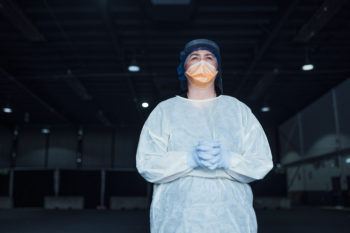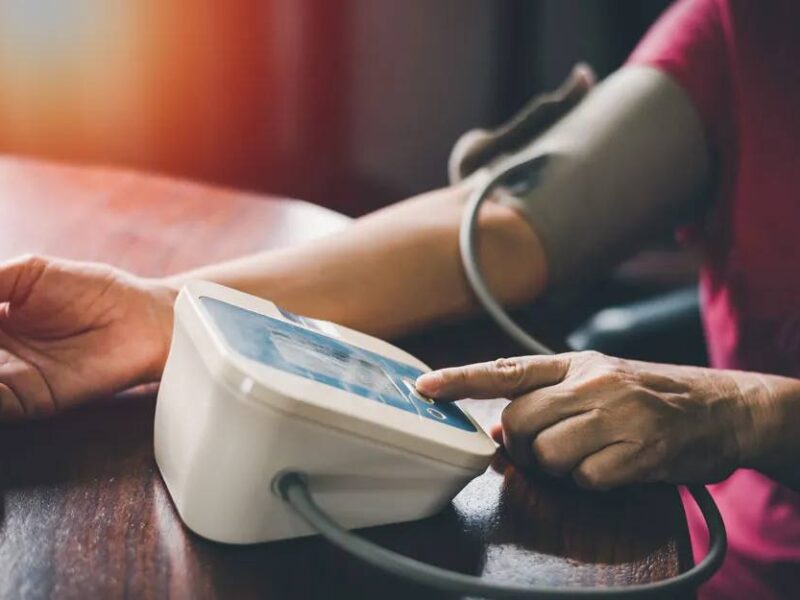Provider Fatigue And Burnout During COVID-19

Limited supplies of personal protective equipment, inefficiencies in processes, financial instability and an overall lack of preparedness to respond to the COVID-19 pandemic are among the factors leading to medical worker fatigue and burnout, according to a new paper from a team that included the Texas A&M University School of Public Health.
In addition to catastrophic effects on human health, the ongoing pandemic is also taking a massive toll on the mental and emotional well-being of front-line health care workers around the world, researchers found. Bita Kash, professor in the Department of Health Policy Management, and Farzan Sasangohar, a Texas A&M health systems engineer, studied how longer shifts, work-life balance disruptions and other factors have affected health care workers. The research was conducted with the Houston Methodist Research Institute and the Houston Methodist Hospital system.
Their findings were recently published journal Anesthesia & Analgesia. The paper shares insights gathered by medical leaders and scientists at Houston Methodist Hospital regarding health care professional fatigue and burnout in the intensive care setting, and gives recommendations for preparing for future pandemics and other disasters.
The researchers identified a variety of occupational hazards health care workers face when responding to the pandemic. The rapid growth of COVID-19 nationally has exposed a lack of preparedness, limited supplies of personal protective equipment (PPE) and training on how to properly use it. Additionally, hospitals had difficulty testing a sufficient number of patients early in the disease outbreak, hampering efforts to slow disease spread and effectively treat patients. This lack of preparedness, increased risk for health care workers and possible poor patient outcomes increases the psychological toll on medical providers.
Another factor is the scale of the national-level response to the pandemic. States have requested PPE and ventilators from the U.S. Strategic National Stockpile, but most received only a fraction of what they requested one month into the pandemic, adding to stress and anxiety. This underwhelming response is compounded by the procedures for requesting access to the stockpile, which have been perceived as slow and cumbersome.
This has led to further uncertainty of whether more PPE and ventilators will become available, and if so, when. As a result of these uncertainties, health care workers have been advised to use and reuse PPE beyond their originally recommended guidelines, which may reduce effectiveness and lead to additional stress.
Inefficiencies in processes when ordering equipment and protocols for caring for patients are another source of frustration the researchers identified. A lack of established policies for emergency management can make everyday tasks more time-consuming and increase provider workloads.
Attempts to address shortfalls in protocols have shown mixed success, with training videos on PPE use not being updated to address the alternative types of equipment being used. The researchers also noted a mix of patient care and PPE guidelines coming from the various subspecialty professional societies and a lack of initiative at higher levels to unify guidelines.
Another contributing factor to burnout they identified is one that many outside of the medical field are also facing: financial instability. Efforts to slow the spread of COVID-19 through social distancing have led to slowdowns in medical visits, elective procedures and surgeries. This has caused a significant economic downturn and loss of income among the healthcare workforce through furloughs and layoffs. Uncertainties about future employment and income have long been known to be associated with anxiety and stress.
“The response to the COVID-19 pandemic at all levels points to a need to create, test and implement disaster management plans that bring together the strengths of individuals, industry and all levels of government,” Kash said. “Additionally, since large-scale disasters can overload responses at the national level, a local-level focus on resilience would be beneficial. Pandemics and other disasters can provide opportunities to learn, but without proper leadership, planning and resource allocation, such lessons can be lost.”
The authors of the paper propose that having plans in place for disaster management that can be quickly adopted to respond to changes on the ground are crucial, as are procedures to quickly procure adequate PPE, medical equipment and other necessary items such as cleaning supplies and disinfectants.
Better communication regarding topics like testing and PPE availability could also help reduce health care worker anxiety and stress. Regular structured training on disaster management and response is another key strategy the researchers identified as being important. They also noted a need for a reserve group of medical providers at the regional, state and national level that can be routinely trained and activated in case of an emergency.
They also recommend that implementing methods for assessing worker fatigue and burnout, such as mobile health tools and wearable sensors to monitor fatigue, would be helpful for proactively managing workplace readiness.
This article by Rae Lynn Mitchell originally appeared on Vital Record.





